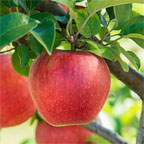- Q.Soilless Growing Medium For Containers - I have heard about three major ingredients (peat moss, vermiculite and perlite) in soilless potting mix. What are they? How ...
- Q.Soilless Growing Medium For Containers - I prefer container gardening. How does one select the container sizes and what is soilless growing medium?
- Q.How To Best Move Three Med. Size Potted Trees Inside For Winter - Do I need to treat them for bugs first? They look very healthy and green now.
- Q.Over Wintering Ceramic Pots - I live in northern Idaho (new to the area) and have no idea how to care for the many ceramic ...
- Q.Repotting Plants - What can be used in the bottom of the pot for drainage when repotting plants for the winter?
- Q.I Have To Bring In Two Very Large Plants - I would like advice on repotting/down sizing the plants into smaller containers to make them more managable and easier to ...
- Q.Ceramic Pots - When using ceramic pots w/o drainage holes, is it neccessary to place rocks on the bottom level for drainage?
Q.Soilless Growing Medium For Containers
I have heard about three major ingredients (peat moss, vermiculite and perlite) in soilless potting mix. What are they? How do they help in plant growth? How does one check for the right qualities of these products? If not available locally and easily, could they be replaced with the other materials (i. e. could a good potting mix be made out of organic composts, manures, oilseed meals, newspaper/white paper shreddings, natural mineral rock powders [limestone, rock phosphates, dolomite], etc) for making homemade potting mix? I shall appreciate the tips on homemade potting mixes without the use of moss, vermiculite and perlite.
- A.
These articles should help: https://www.gardeningknowhow.com/special/containers/choosing-containers-for-potted-environments.htm
https://www.gardeningknowhow.com/garden-how-to/soil-fertilizers/soilless-growing-mediums.htmWas this answer useful?00
Q.Soilless Growing Medium for Containers
I prefer container gardening. How does one select the container sizes and what is soilless growing medium?
- A.
Here is an article or two that you may find helpful: https://www.gardeningknowhow.com/special/containers/choosing-containers-for-potted-environments.htm
https://www.gardeningknowhow.com/garden-how-to/soil-fertilizers/soilless-growing-mediums.htmWas this answer useful?00 Q.How to Best Move Three Med. Size Potted Trees Inside for Winter
Do I need to treat them for bugs first? They look very healthy and green now.
- A.
I would treat them for pests as small pests can hide in the leaves and it just takes a few to create a population once they are inside.
If possible, you may want to consider acclimating the plants as well. This article will help with that:
https://www.gardeningknowhow.com/houseplants/hpgen/using-pesticides-and-other-chemicals-on-your-houseplants.htmWas this answer useful?00 Q.Over Wintering Ceramic Pots
I live in northern Idaho (new to the area) and have no idea how to care for the many ceramic pots I have acquired this year. Some are medium sized (12 inches to 15 inches across) and many are large to very large. Our back deck faces west and is on the 2nd story of the house. We have about 10 of those pots there. The other pots are on the covered front porch. I need to know how to overwinter those pots to keep them from cracking. Your help would be greatly appreciated.
- A.
The best thing to do would be to store them in a sheltered place, like a garage or a shed. If left outside, the water and temperature fluctuations will crack them.
Most people sterilize their containers before storing them by wiping them down with a weak bleach solution. This way if your plants had some kind of disease, the disease does not overwinter as well.
Was this answer useful?00 Q.Repotting Plants
What can be used in the bottom of the pot for drainage when repotting plants for the winter?
- A.
Broken pots, Styrofoam peanuts and gravel all make excellent drainage mediums.
Was this answer useful?00 Q.I Have to Bring in Two Very Large Plants
I would like advice on repotting/down sizing the plants into smaller containers to make them more managable and easier to get into the house for winter. I live in the tidewater area and the two plants have to be moved via a hand truck in and out seasonally. Rather than let them die, I want two split them up into smaller pots. Need guidance.
- A.
Typically, if you are downsizing a plant, you will be doing some root pruning. This article will help you with root pruning:
https://www.gardeningknowhow.com/houseplants/hpgen/prune-roots.htmAnytime you are repotting a plant, it is susceptible to transplant shock, but even more so when you are also root pruning. This article will help you with that:
https://www.gardeningknowhow.com/plant-problems/environmental/learn-how-to-avoid-and-repair-transplant-shock-in-plants.htmIf you can let me know what kind of plants they are, I can give you further help on how to handle splitting them.
Was this answer useful?00 Q.Ceramic pots
When using ceramic pots w/o drainage holes, is it neccessary to place rocks on the bottom level for drainage?
- A.
Yes, or you can even use Styrofoam peanuts instead of rocks in the bottom of pots. Depending on the pot size, some people also prefer to drop another smaller plastic pot (with drainage holes) inside the ceramic one. This could also sit on top of the rocks. Anything you can do to keep the plant roots from continually sitting in water is a good idea.
Was this answer useful?00



